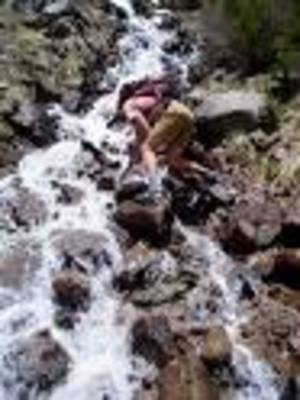Being stranded in the wilderness can be a death sentence for almost anyone. By knowing some simple survival methods, you can lengthen the time you can survive, and increase the odds of yourself being rescued alive. Water is the most essential component we need to sustain life.
Without water every cell in your body begins to shrink and shrivel. Blood cannot flow which leads to less than adequate oxygen available for your muscles to keep working. Dehydration can start within 5-6 hours of being without water. Within 24 hours, your body can be severely dehydrated.
The first thing you need to do when stranded in the wilderness is to find a source of drinking water. If you are fortunate to have some fresh water with you, use it sparingly, and never depend on it to last you till you are safe at home. Immediately begin searching for any water. If you are able to locate a fresh spring that spring will be your lifeline until you are rescued. A fresh water source may also include a river, small creek or stream. Even a lake or pond can be your source of hydration.
Now that that’s been said, you need to be very cautious of what you are drinking. Keep in mind that millions of organisms live in fresh water sources. The cleanest fresh water is from a spring. Many times you can drink fresh spring water without the worry of bacteria or virus. If you ever drink from a river, creek, pond or lake you will need to purify your water in some way.
Boiling the water is the easiest and perhaps the most effective way to purify water when you are stranded. Of course, you will have to have a fire to do this, so a fire should be next on your list of things to do! Any metal container will do to warm the water and bring it to a boil. Pop cans, tin cans, glass jars, or even shells will hold water while sitting in the fire. Boil the water for at least 10 minutes to ensure all organisms are destroyed.
If you cannot boil your water, straining the water with your shirt or another fine mesh material will separate out most of the filth and dirt in the water. While this may not kill all microorganisms, it is better to do this screening than to drink the water straight from the source.
If you have not found a water source within a few hours, you will need to think of another method of obtaining drinking water. One thing you should do immediately is set up some method of catching rain water. Rain water is pure enough to drink straight from the source. Find any material you can to catch the water. Large leaves work great to direct the rain into your vessel.
You can also collect the morning dew. Set up some large leaves before night time and shape them into a slight bowel shape. In the morning, the leaves should be full of fresh dew, which is safe to drink as well.
You can also evaporate water to be used for drinking. You’ll need a large container and some glass, plastic or other clear material. This method works great if you are near a salt water source, such as the ocean, to remove the salt. Never drink salt water no matter how thirsty you are, you will only become more dehydrated. Set the covered container full of water in the sun and allow the heat of the sun’s rays begin to warm the water and speed up the evaporation process.
If none of these methods seem to produce enough water to keep you hydrated, you will need to keep searching for a water source. Look for animal paths that will often lead to water. Try to find some low lying areas where water may puddle easily that you can drink. Stay on the move so that you can find water as soon as possible.



